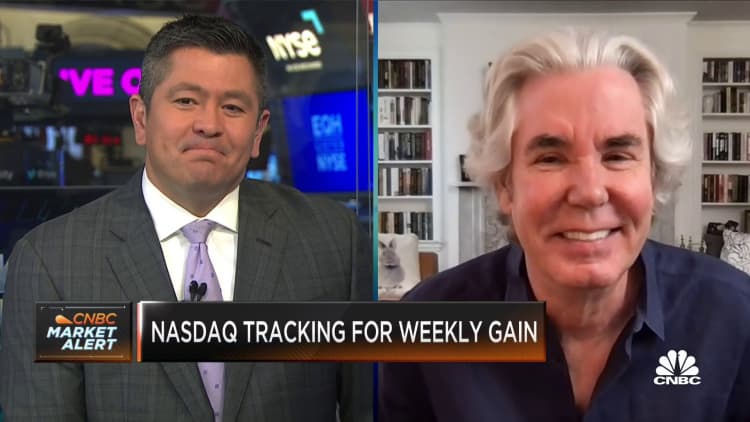Traders raise the chances for a Fed rate cut following April inflation report
Shoppers during the grand opening of a Costco Wholesale store in Kyle, Texas, on Thursday, March 30, 2023.
Jordan Vonderhaar | Bloomberg | Getty Images
Even with inflation running well above the Federal Reserve’s goal, markets became more convinced Wednesday that the central bank will be cutting interest rates by as soon as September.
The annual inflation rate as measured by the consumer price index fell to 4.9% in April, its lowest level in two years but still more than double the Fed’s 2% target.
related investing news


Still, it was enough for traders to raise the chances of a September rate cut to near 80%, according to the CME Group’s Fed Watch tracker of prices in the fed funds futures market. In fact, the October fed funds contract implied a policy rate of 4.84%, or nearly a full quarter point below the current effective rate of 5.08%.
Among Wall Street analysts and economists, though, the case for a rate cut remains shaky.
“The timing of a first rate cut will depend both on how quickly inflation slows and how quickly the job market becomes less tight,” said Bill Adams, chief economist for Comerica Bank. A softer employment picture and further declines in the inflation rate “would allow the Fed to begin reducing interest rates as early as this fall.”
However, the bar seems high for a rate cut, even if central bankers decide they can halt increases for now.
New York Fed President John Williams, an influential policymaker and voter on the rate-setting Federal Open Market Committee, said Tuesday he doesn’t expect that policy will ease at all this year, though he left open the possibility beyond that.
“In my forecast, we need to keep a restrictive stance of policy in place for quite some time to make sure we really bring inflation down,” he said during an appearance before the Economic Club of New York. “I do not see in my baseline forecast any reason to cut interest rates this year.”
Still, markets are pricing in multiple cuts for 2023, totaling 0.75 percentage points, that would take the Fed’s benchmark rate down to a target range of 4.25%-4.5%. The central bank raised its fed funds rate last week by a quarter point, to 5.0-5.25%, its 10th increase since March, 2022.
Policymakers likely will continue to douse those expectations for easier policy in future months, even if they choose not to raise rates.

“That’s what they’re really pushing back on is our expectations in the market that they’re going to ease. But they’re not pushing the notion that the peak rate is going to be higher,” Paul McCulley, former Pimco managing director and currently senior fellow in financial macroeconomics for Cornell, said Wednesday on CNBC’s “Squawk on the Street.”
“They’re going to sound quite hawkish until they get a lot of clean readings that we really have reached where we want to be,” said McCulley, using a market term for preferring higher rates and tighter monetary policy.
The April CPI report provided mixed signals on where inflation is headed, with the core reading, excluding food and energy costs, holding steady at 5.5% annually.
Moreover, an Atlanta Fed gauge of “sticky CPI,” measuring prices that don’t tend to move a lot, was only slightly lower at 6.5% in April. Flexible-price CPI, which measures more volatile items such as food and energy costs, rose to 1.9%, an increase of 0.3 percentage point.
“The fact that Core inflation’s annualized pace remains well above the Federal Reserve’s target of 2% and shows no signs of trending downward is critical,” PNC senior economist Kurt Rankin wrote in response to the CPI data. “Decreases on this front will be necessary before the Fed’s monetary policy rhetoric can be expected to change.”
Prior to the CPI release, markets had been pricing in about a 20% chance of a rate hike at the June 13-14 FOMC meeting. Following the meeting, that probability fell to just 8.5%.
That came even though “the previous downward trend has temporarily stalled” for inflation, wrote Andrew Hunter, deputy chief economist at Capital Economics.
“We don’t think that will persuade the Fed to hike again at the June FOMC meeting, but it does suggest a risk that rates will need to remain high for a little longer than we have assumed,” Hunter said.
For more latest Economy News Click Here

